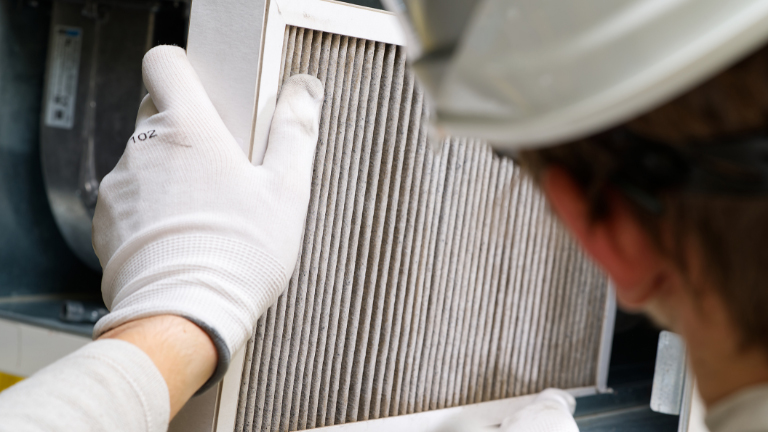
Recommended air changes per hour is a metric that ASHRAE lays out for various types of facilities to maintain indoor air quality. While this metric can be used to evaluate your filtration, it is also important to realize the role which filter efficiency can play in this equation.
With many facilities working to improve their indoor air quality, some have inadvertently affected the air changes per hour – sometimes unnecessarily. This can usually be avoided by engaging a trained filtration specialist. Better filtration does not need to reduce airflow, and there are ways to achieve better filtration and reduce air restriction at the same time.
Let’s begin with standard pleated filters. You are using a MERV 10 filter and want to go to a MERV 13. A MERV 13 media gives better filtration but will cause more static pressure. This can be overcome by using more media in your filter, such as a high-capacity or mini pleat style filter. A thicker filter can also help this issue, but can be tricky due to the track or grill where the filter is installed. Solutions to this can include a 1” lipped filter with a thicker depth (such as 4”), to provide substantially more media and effectively reduce back pressure.
For secondary and final filtration, the options are endless. Here is a real-life example we encountered with incredible results. A law enforcement shooting range was getting heavy use and the fumes were not clearing out fast enough. This was a 3-stage filtration system, so all three stages were analyzed.
Formerly MERV 10 standard pleated filters, we substituted these for MERV 10 high capacity pleats. This cut air restriction by 30%, without changing the efficiency rating of the filters.
Formerly bag filters, we aided this stage by supplying longer bags with more pockets – cutting air restriction in this section by 40%.
These are HEPA filters, and although these haven’t been replaced yet, by switching to a high-capacity HEPA we will be able to reduce this by 10%.
The result was astounding and visible. The fumes are clearing out faster, the system is cooling better and – believe it or not – the filters, while being the same efficiency, are lasting longer.
Headquarters and Warehouse #1
2567 Prime Way
Knoxville, TN 37918
(865) 525-8697
Production Facility and Warehouse #2
2551 Prime Way
Knoxville, TN 37918
High Purity Facility and Warehouse #3
2535 Prime Way
Knoxville, TN 37918